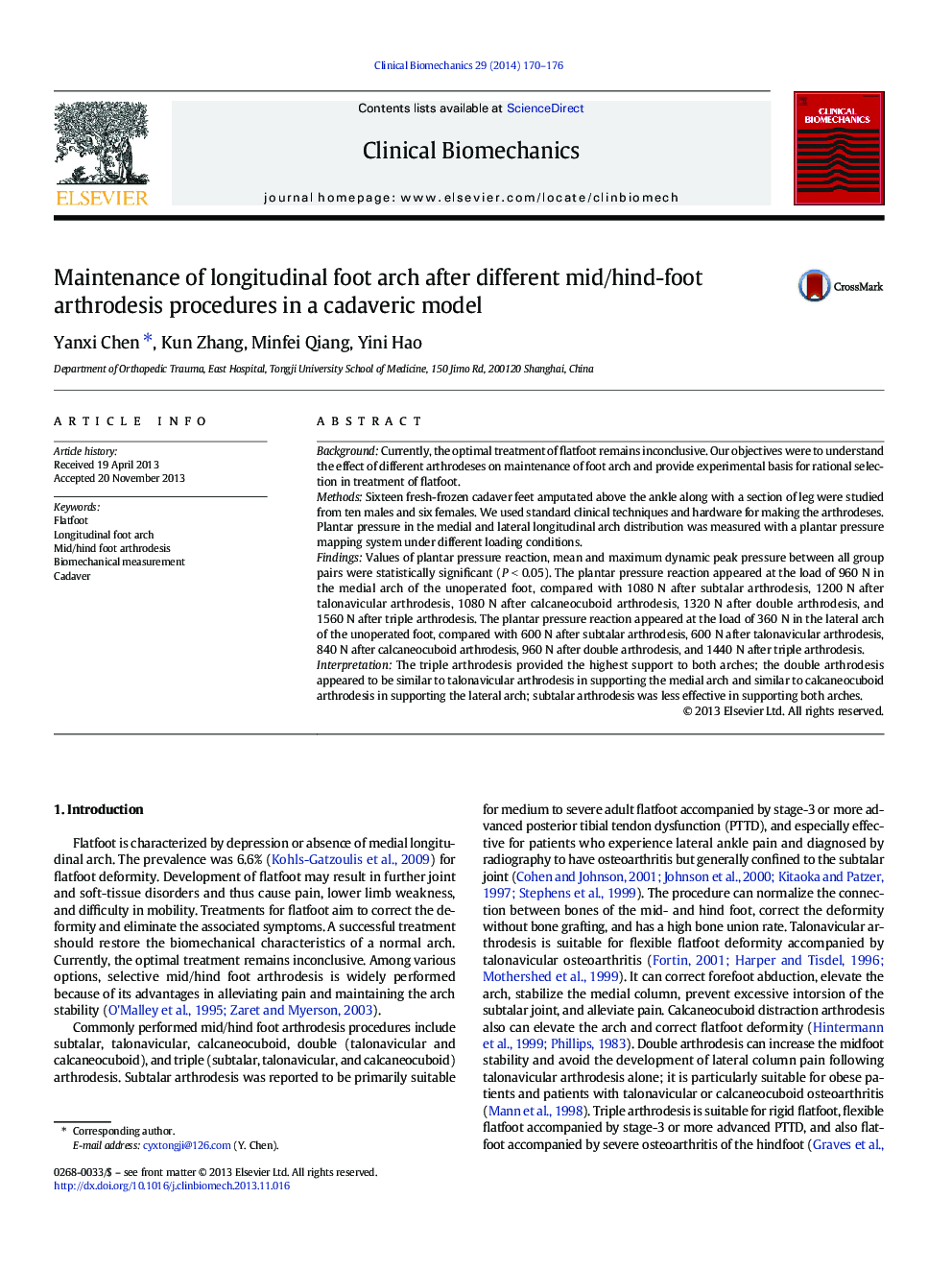| Article ID | Journal | Published Year | Pages | File Type |
|---|---|---|---|---|
| 6205019 | Clinical Biomechanics | 2014 | 7 Pages |
BackgroundCurrently, the optimal treatment of flatfoot remains inconclusive. Our objectives were to understand the effect of different arthrodeses on maintenance of foot arch and provide experimental basis for rational selection in treatment of flatfoot.MethodsSixteen fresh-frozen cadaver feet amputated above the ankle along with a section of leg were studied from ten males and six females. We used standard clinical techniques and hardware for making the arthrodeses. Plantar pressure in the medial and lateral longitudinal arch distribution was measured with a plantar pressure mapping system under different loading conditions.FindingsValues of plantar pressure reaction, mean and maximum dynamic peak pressure between all group pairs were statistically significant (PÂ <Â 0.05). The plantar pressure reaction appeared at the load of 960Â N in the medial arch of the unoperated foot, compared with 1080Â N after subtalar arthrodesis, 1200Â N after talonavicular arthrodesis, 1080Â N after calcaneocuboid arthrodesis, 1320Â N after double arthrodesis, and 1560Â N after triple arthrodesis. The plantar pressure reaction appeared at the load of 360Â N in the lateral arch of the unoperated foot, compared with 600Â N after subtalar arthrodesis, 600Â N after talonavicular arthrodesis, 840Â N after calcaneocuboid arthrodesis, 960Â N after double arthrodesis, and 1440Â N after triple arthrodesis.InterpretationThe triple arthrodesis provided the highest support to both arches; the double arthrodesis appeared to be similar to talonavicular arthrodesis in supporting the medial arch and similar to calcaneocuboid arthrodesis in supporting the lateral arch; subtalar arthrodesis was less effective in supporting both arches.
